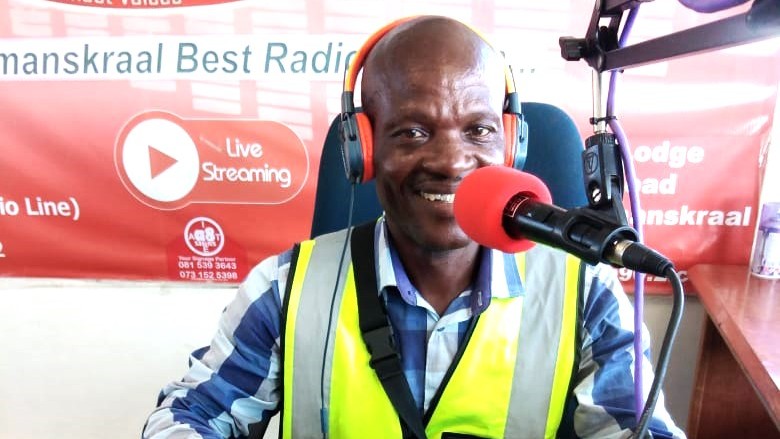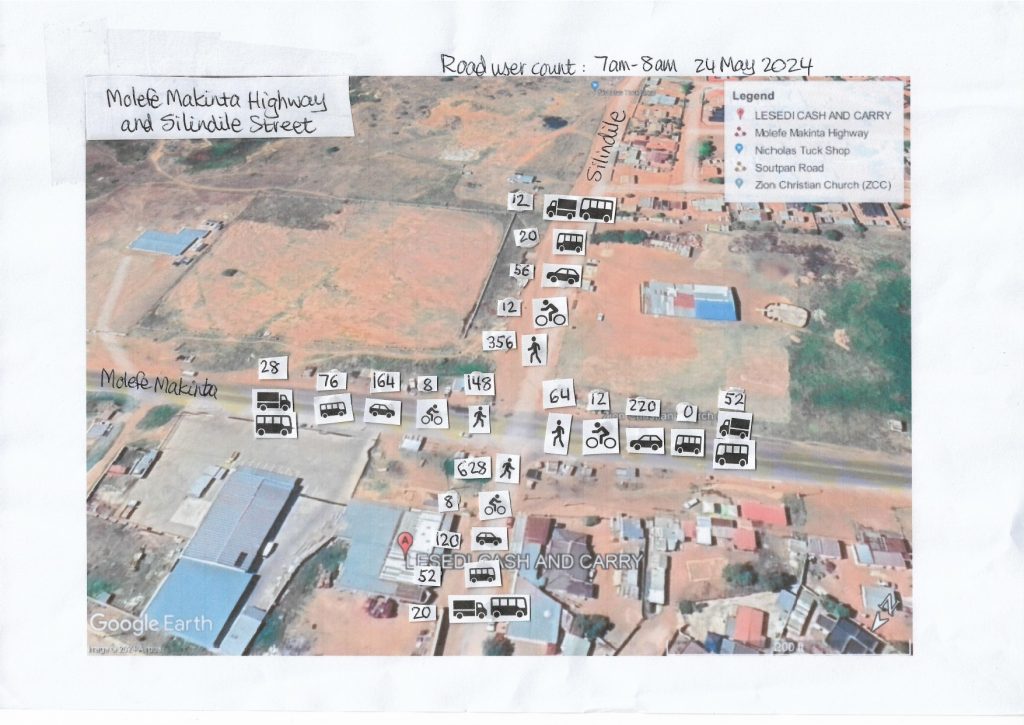
“Road deaths and serious injuries amongst vulnerable road users – especially people moving on foot – are an ethical crisis and public health epidemic in South Africa,” says Lee Randall, co-founder and director of the Road Ethics Project
In 2024, the Road Ethics Project, in collaboration with the Hammanskraal United Commuters Voice (HUCV), conducted Mobility Snapshots at two intersections in Johannesburg and Soshanguve, 85km apart within the province of Gauteng. These two intersections differ vastly in appearance and setting, yet present similar challenges for the people using them.
At peak hours between 7:00 and 8:00 in the morning, approximately 1,200 people walk at each intersection, including a large number of school children. Yet both intersections lack pedestrian safety features like painted pedestrian crossings, traffic calming measures, and continuous paved sidewalks clear of obstructions on all roads at the intersection. The NGOs used data from TomTom, to check vehicle speeds. They found that, on average, motor vehicles on the main road at each intersection travel at or above the 60 km/h posted speed limit despite the presence of so many pedestrians.
Based on the data, the Road Ethics Project and HUCV will advocate during and beyond UN Global Road Safety Week for installation of raised pedestrian crossings at the two intersections to slow vehicles down and make pedestrians more visible. They hope that if raised crossings are implemented at these two intersections, they can become a pilot for other similar intersections.
During the campaign week, they will raise community demand by sharing Mobility Snapshot findings through social and mainstream media, particularly targeting the communities around the two Mobility Snapshot intersections. Working with HUCV brings strong community credibility to the campaign. HUCV’s founder Caiphus Makoti, the winner of The Road Ethics Project’s 2023 Thami Radebe Road Heroes Award, lives with his family in an informal settlement alongside the busy Molefe Makinta Highway in the Hammanskraal/Soshanguve area. Through his radio presentations and engagements with bus and taxi drivers and commuters, he is a well-known and powerful advocate for the right to safe mobility. “Through my talks on community radio stations, I can reach numerous people, and listeners call in with questions like ‘how to cross roads safely’,” says Caiphus. “Living close to the highway I see how many people walk along and across it every day. And because I have two sets of twins – the older ones are teenagers and the younger ones are toddlers – I’m especially interested in child safety.’
Over and above the week’s activities, the two NGOs are working with a local photographer to develop a mobile photo exhibition on a printed banner that will feature Caiphus and his family’s journeys. The exhibition Lived mobilities in a peri-urban low-income community in South Africa will raise awareness of the challenges facing people who walk and cycle in poorer parts of the country and the connection between land use and transport planning. It is planned that the exhibition will be launched in time for World Day of Remembrance for Road Traffic Victims in November 2025.
To push for implementation of the raised crossings with decision makers, the NGOs are reaching out to different decision makers at local government levels as well as the Gauteng Province’s Department of Roads and Transport. They are also targeting the Executive Manager for Road Safety at the national road safety agency as well as the Minister and Deputy Minister for Transport. To strengthen their case and engage relevant and influential stakeholders, the Road Ethics Project and HUCV are planning to engage with civil engineers, traffic researchers and crash investigators to gain their inputs on possible designs for the two intersections.
The two Mobility Snapshots in Johannesburg and Soshanguve are indicative of wider issues. Over 40% of road deaths in South Africa are among pedestrians – 47% on the recent Easter weekend. Children, especially those in low-income communities, frequently rely on walking for all or part of their journeys to school, and schools are often located near major arterial roads and highways.
On the plus side, there are some significant political factors that the Road Ethics Project and HUCV will leverage in their advocacy. The rights of children are enshrined in South Africa’s constitution giving a strong mandate to make school journeys safe and accessible, and the recent adoption of Project EDWARD (Every Day Without A Road Death) by the national road safety agency has opened the door for road safety NGOs to engage. Additionally, the government is already considering reducing urban speed limits from 60 km/h to 50 km/h and introducing more low-speed zones (eg: 30 km/h) in places where a lot of people walk, such as near schools, markets, and transport hubs.
For the Road Safety Ethics Project, the UN Global Road Safety Week campaign and Mobility Snapshots, isn’t just a week, it’s a moment in a wider advocacy effort, gathering data, mobilizing communities, and bringing evidence to decision makers to seek action.
The Road Safety Ethics Project’s campaign is supported with a small grant from TotalEnergies Foundation through the Alliance Africa Chapter.
